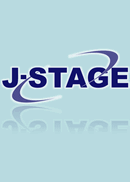22 巻, 4 号
選択された号の論文の9件中1~9を表示しています
- |<
- <
- 1
- >
- >|
Reviews
-
2016 年 22 巻 4 号 p. 217-227
発行日: 2016年
公開日: 2016/12/26
PDF形式でダウンロード (496K) -
2016 年 22 巻 4 号 p. 228-230
発行日: 2016年
公開日: 2016/12/26
PDF形式でダウンロード (749K) -
2016 年 22 巻 4 号 p. 231-238
発行日: 2016年
公開日: 2016/12/26
[早期公開] 公開日: 2016/06/20PDF形式でダウンロード (285K)
Original Papers
-
2016 年 22 巻 4 号 p. 239-244
発行日: 2016年
公開日: 2016/12/26
[早期公開] 公開日: 2016/03/14PDF形式でダウンロード (2369K) -
2016 年 22 巻 4 号 p. 245-250
発行日: 2016年
公開日: 2016/12/26
[早期公開] 公開日: 2016/03/14PDF形式でダウンロード (729K) -
2016 年 22 巻 4 号 p. 251-257
発行日: 2016年
公開日: 2016/12/26
[早期公開] 公開日: 2016/11/04PDF形式でダウンロード (587K) -
2016 年 22 巻 4 号 p. 258-265
発行日: 2016年
公開日: 2016/12/26
[早期公開] 公開日: 2016/11/21PDF形式でダウンロード (788K) -
2016 年 22 巻 4 号 p. 266-272
発行日: 2016年
公開日: 2016/12/26
[早期公開] 公開日: 2016/12/20PDF形式でダウンロード (786K)
Case Report
-
2016 年 22 巻 4 号 p. 273-277
発行日: 2016年
公開日: 2016/12/26
[早期公開] 公開日: 2016/06/07PDF形式でダウンロード (931K)
- |<
- <
- 1
- >
- >|
